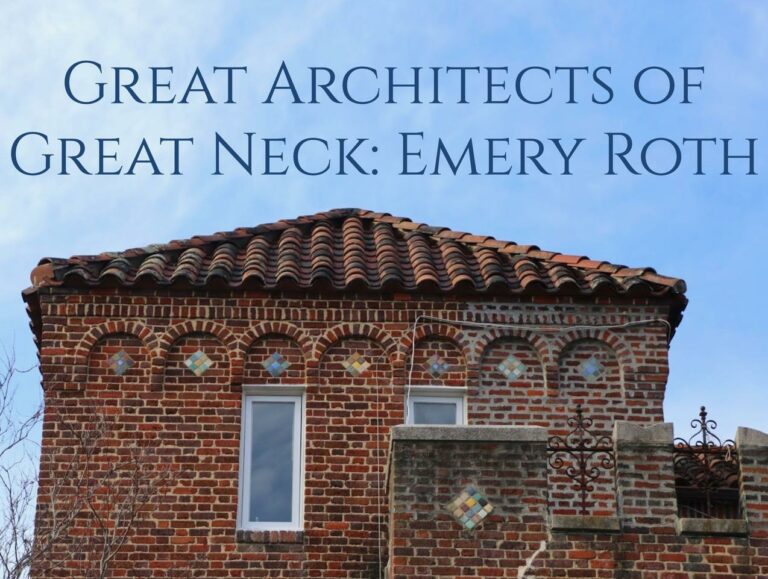
Emery Roth, one of America’s most noted residential architects and his connections to Great Neck, was the subject of a recent Great Neck Historical Society program. Working in collaboration with members of the Roth family, newly elected Great Neck Historical Society Board member Andrew Cronson shared the story of Roth’s journey from humble beginnings as an immigrant from Hungary to embodying the American dream as a highly-successful and accomplished architect whose buildings have become landmarks.
Roth only created a handful of single family residential homes during his lifetime. Great Neck’s was designed for Frances Hennequin, a member of the Zigfield Follies theatrical troupe who moved to Long Island to be a part of the burgeoning cultural ecosystem that formed on the North Shore in the 1920s. It remains an outstanding example of Roth’s residential work and an important reminder of Great Neck’s star-studded theatrical past.
Roth was able to create residential works that shaped the New York City skyline with elegant and dignified forms. His career included designs for the lauded Ritz Tower, Oliver Cromwell, San Remo, Beresford, El Dorado, and Normandy Apartments. Following his death, his family continued the firm as Emery Roth & Sons. It designed many of the Park Avenue and Battery Park office buildings erected from 1950 to 1980.
Following the inaugural Jane’s Walk festival on Long Island this past May, awareness of historic preservation has come to the forefront of conversation in the community. Since the Village of Great Neck Estates does not have a local landmarks law on the books, another topic of discussion was the importance of resident involvement in the protection of cultural resources. The Village of Great Neck Estates is lucky to have several residential and commercial structures that would serve as proud examples of the area’s local history. With the recent loss of the Great Neck Playhouse to demolition and the lack of a law to protect historic sites, it has become more critical that these beacons of Great Neck history are protected. In addition to Emery Roth’s design on Hillside Avenue, Great Neck Estates has works by Frank Lloyd Wright, Gustav Stickley, Leroy P. Ward, Frank J. Forster, Olmsted Brothers, and Perkins & Will—all nationally acclaimed practitioners of their era.
“If residents believe that their history and neighborhood character is worth preserving, they themselves are the best messengers to reinforce that idea to their local officials and trustees. Without such assurance of codified protection, all of these significant sites and the unique sense of place remains at risk of being lost,” said Mr. Cronson.
In summing up the importance of landmarking, he noted: “If we can capture the essence of Great Neck Estates and beyond by protecting the best of the old, it will tell those decades from now what it was like to live and grow up here over many centuries. For that is one of the greatest, most irreplaceable gifts we can leave for our future.”
Great Neck Historical Society Vice President for History Leila Mattson said, “The Great Neck community is so fortunate to have many prominent, nationally-regarded architects who designed here. This series is a wonderful opportunity to learn more about the hidden treasures with which we live and how to best go about preserving them.”
For further information about the series and to view a recording of the presentation, visit https://www.greatneckhistorical.org.






